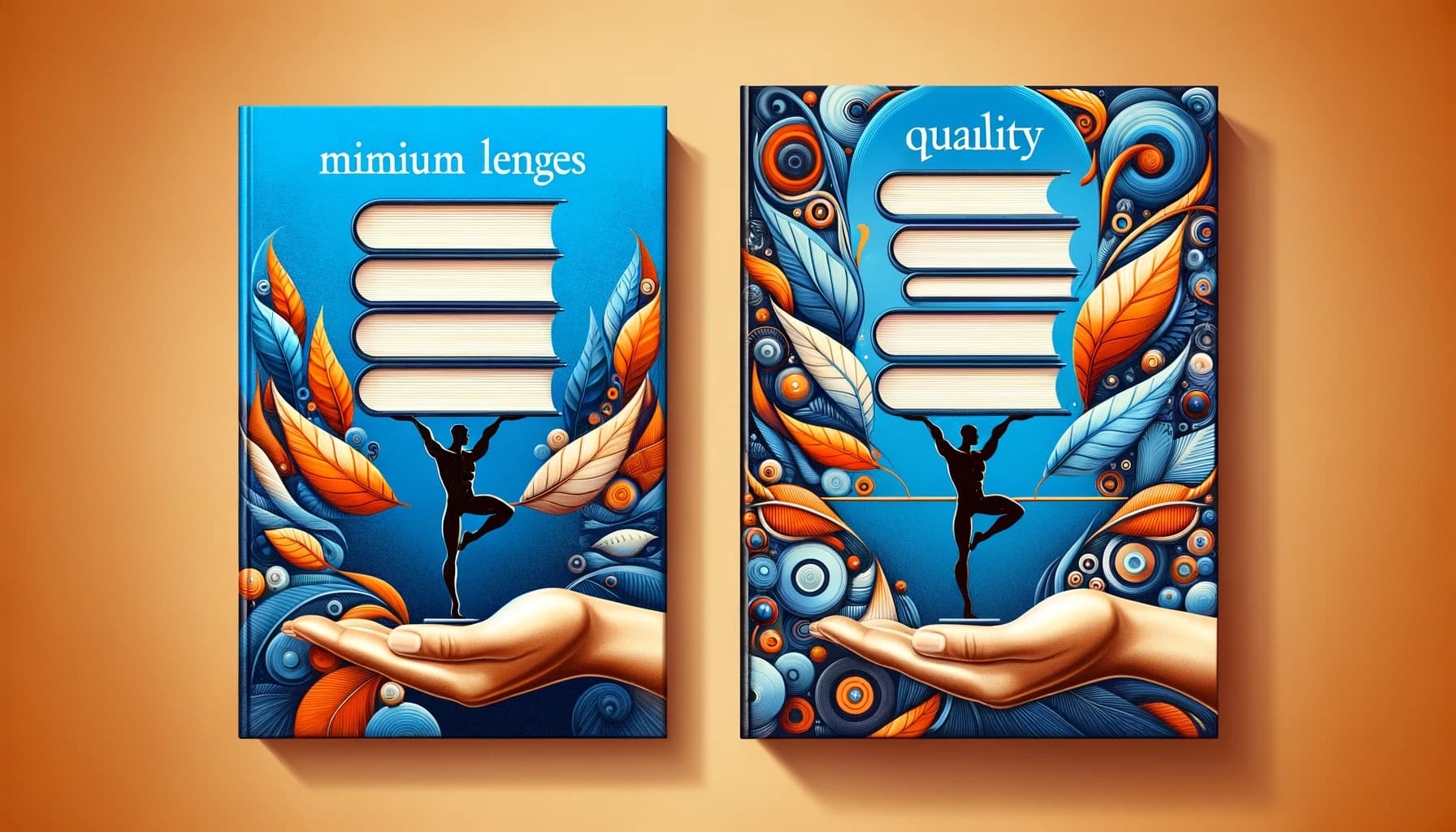Table of Contents
Writing a dialogue scene can feel really tricky, huh? You want it to sound natural but also vibrant and character-driven. It’s a common struggle—the pressure to make conversations feel real and engaging without sounding like a bunch of robot chatter.
But don’t worry! By sticking around, you’ll discover some simple yet effective techniques that will elevate your dialogue skills. Imagine crafting conversations that not only flow effortlessly but also reveal the essence of your characters.
We’ll dive into tips like adding depth with subtext, using action beats for impact, and maintaining unique character voices. Ready to level up your dialogue game? Let’s get started!
Key Takeaways
- Use realistic speech patterns; incorporate natural interruptions, humor, and contractions to create authentic dialogue.
- Define each character’s unique voice to showcase their personality and background through speech.
- Utilize subtext to convey deeper meanings, letting what’s unsaid add tension or humor.
- Keep dialogue tags simple—stick mostly to “said” to avoid distracting readers from the conversation.
- Introduce action beats to enhance emotion and break up dialogue effectively.
- Vary sentence structure for rhythm and flow, balancing short and long sentences.
- Be economical with dialogue; eliminate unnecessary lines that don’t advance the plot or character development.
- Create tension by allowing characters to disagree or provoke each other in conversations.
- Pace dialogue in accordance with the scene’s energy; adjust speed through sentence length and action beats.
- Use dialect or accents sparingly to add authenticity without sacrificing readability.
- Ensure dialogue fits the scene’s context, reflecting the surrounding environment.
- Keep exchanges focused and direct; revise to remove any filler for impactful dialogue.

1. Write Natural Sounding Dialogue
One of the key elements in good storytelling is creating dialogue that feels real and relatable.
People don’t speak in perfect sentences; they stumble, interrupt, and mix in humor or sarcasm.
Try reading your dialogue out loud to see if it comes across as something someone would genuinely say.
Use informal language, contractions, and the occasional filler word to create authenticity.
For instance, instead of “I do not understand,” consider having a character say, “I don’t get it.”
By ensuring your dialogue mirrors actual speech, readers will connect more with your characters.
2. Show Character Through Dialogue
Dialogue is a fantastic tool to reveal who your characters are and what they care about.
Each character should have a unique voice that reflects their personality or background.
For example, a character from an upper-class upbringing might use formal language, while a more laid-back character might be more casual and use slang.
Pay attention to what the character talks about and how they say it.
Someone who is insecure may hesitate or avoid eye contact in dialogue, while a confident character may dominate the conversation.
Think about motivations and desires—what does the character want to convey, and how can you show it through dialogue?
3. Add Depth with Subtext
Not everything needs to be said outright; sometimes, what’s unsaid carries the most weight.
Subtext in dialogue is when the real meaning lies beneath the surface of what’s being said.
For instance, rather than having a character directly state they are angry, they might say, “Oh great, just what I needed,” while slamming a door.
This conveys their feelings without explicitly stating them and can create tension or humor.
It’s essential to strike a balance; aim for implicit meanings that add intrigue without confusing your readers.
Making characters communicate indirectly can deepen their relationships and add layers to the narrative.

4. Use Dialogue Tags Wisely
Dialogue tags are the little phrases that help identify who is speaking.
Using “said” is incredibly effective because it’s so common that readers hardly notice it.
Other tags like “wondered” or “shouted” can be useful, but use them sparingly—try to stick to “said” 95% of the time.
For instance, too many varied tags might distract from the conversation itself.
Instead, let the dialogue shine through and guide the reader.
Additionally, remember to format dialogue correctly; a new paragraph every time a new character speaks helps keep things clear.
5. Incorporate Action Beats
Action beats are great for breaking up dialogue and adding layers to the scene.
They can show what a character is doing while speaking, which can reveal their emotions or intentions.
For example, “I can’t believe you!” Jane slammed the door as she said this, which highlights her frustration.
These action cues can replace the need for adverbs or complex punctuation.
Just be careful not to overdo them; too much action can overwhelm the dialogue.
Balance is key to keeping the reader engaged.
6. Vary Sentence Structure for Flow
Keeping dialogue varied in sentence structure is crucial for maintaining reader interest.
Mix short, punchy sentences with longer, more complex ones to create rhythm.
For example, a character might exclaim, “I can’t believe you did that!” followed by a ponderous, reflective statement about another character’s motives.
This can help convey urgency in the conversation and keep the reader engaged.
Additionally, consider the pacing of each conversation and how each line contributes to the overall feel of the scene.
7. Use Contractions for Realism
Contractions make dialogue sound more natural and conversational.
Instead of “I will go,” use “I’ll go.” This mimics how people actually speak.
It gives your characters more personality and makes them easier to relate to.
In a casual setting, a character saying, “I cannot believe you!” may come off as stiff. Instead, try, “I can’t believe you!”
Overall, incorporating contractions where appropriate will enhance the realism in your dialogue.
8. Maintain Unique Character Voices
Each character should have their own voice, something that feels distinctive and recognizable.
Think about how different people speak—some might use slang, others might have a more formal tone.
For example, a quippy character might say, “No way, dude!” while a more serious character would say, “I cannot believe that happened.”
Consistency is important, so keep track of how each character speaks to ensure they remain true to their voice throughout the story.
9. Eliminate Unneeded Dialogue
Dialogue should always serve a purpose in your story.
Excessive small talk can bog down the narrative and bore readers.
If a line doesn’t add to character development or plot progression, consider cutting it.
Try reading your dialogue aloud; if it feels unnecessary or out of place, it probably is.
Keep it tight, ensuring every line has weight and substance.
10. Create Tension and Conflict
Dialogue can be a powerful tool for creating tension and conflict.
Let your characters disagree, argue, or provoke each other.
This can lead to meaningful character development and keep your readers on the edge of their seats.
For instance, two characters who are in love but have different viewpoints can create a compelling scene through their dialogues, making each word impactful.
Conflict in dialogue adds depth and relatability, making readers invest in the outcome.
11. Pace the Dialogue Effectively
Pacing is key, especially in dialogue scenes.
Fast-paced exchanges can create excitement or urgency, while slower moments can build tension.
Use short sentences for quick dialogue and longer lines to reflect deeper emotions or thoughts.
Think about how the dialogue fits with the overall pacing of your scene.
Take breaks for action beats or inner thoughts to adjust the rhythm as needed.
12. Use Dialect and Accents Carefully
Using dialect or accents can add depth to your characters but be careful not to overdo it.
Catch phrases or unique phrases can convey a character’s background without overwhelming your reader.
This adds authenticity, but excessive dialect can make dialogue hard to read.
Ultimately, balance is key; you want your characters to feel real but also to be easily understood.
13. Merge Dialogue with the Scene
Make your dialogue seamlessly connect with the scene’s context.
For example, if characters are in a chaotic workspace, their dialogue might be fast-paced and snappy.
On the flip side, in a quiet library, a soft tone might suit the atmosphere better.
Think about how physical surroundings can influence what characters choose to say.
This not only enhances the scene but also keeps the reader engaged with the narrative’s mood.
14. Keep Dialogue Tight and Focused
Every dialogue exchange should have a clear purpose and stay focused.
Remove any filler words or unnecessary repetition.
For example, instead of “And then I thought, like, I could maybe go,” try “I thought I could go.” This keeps dialogue crisp and makes it impactful.
Once you’ve written the dialogue, review and revise to ensure it’s direct and on-point.
Cleaning up your dialogue will maintain reader engagement and ensure the story flows smoothly.
FAQs
To create natural-sounding dialogue, listen to real conversations, note speech patterns, and incorporate realistic interruptions or overlaps. Aim for authenticity by varying sentence length and using everyday language your characters would naturally use.
Subtext refers to the underlying message or meaning that isn’t explicitly stated. It adds depth to dialogue, making conversations more engaging and realistic, while enhancing character development and the story’s emotional resonance.
To give characters unique voices, consider their backgrounds, experiences, and personalities. Use distinct vocabulary, speech patterns, and phrases that reflect their individuality. Consistent use of these traits will help solidify their voice throughout the narrative.
Action beats are brief actions interspersed within dialogue that convey emotions or reactions. Use them to break up speeches, enhance pacing, and illustrate character emotions, helping the reader visualize the scene and feel the moment’s tension.



